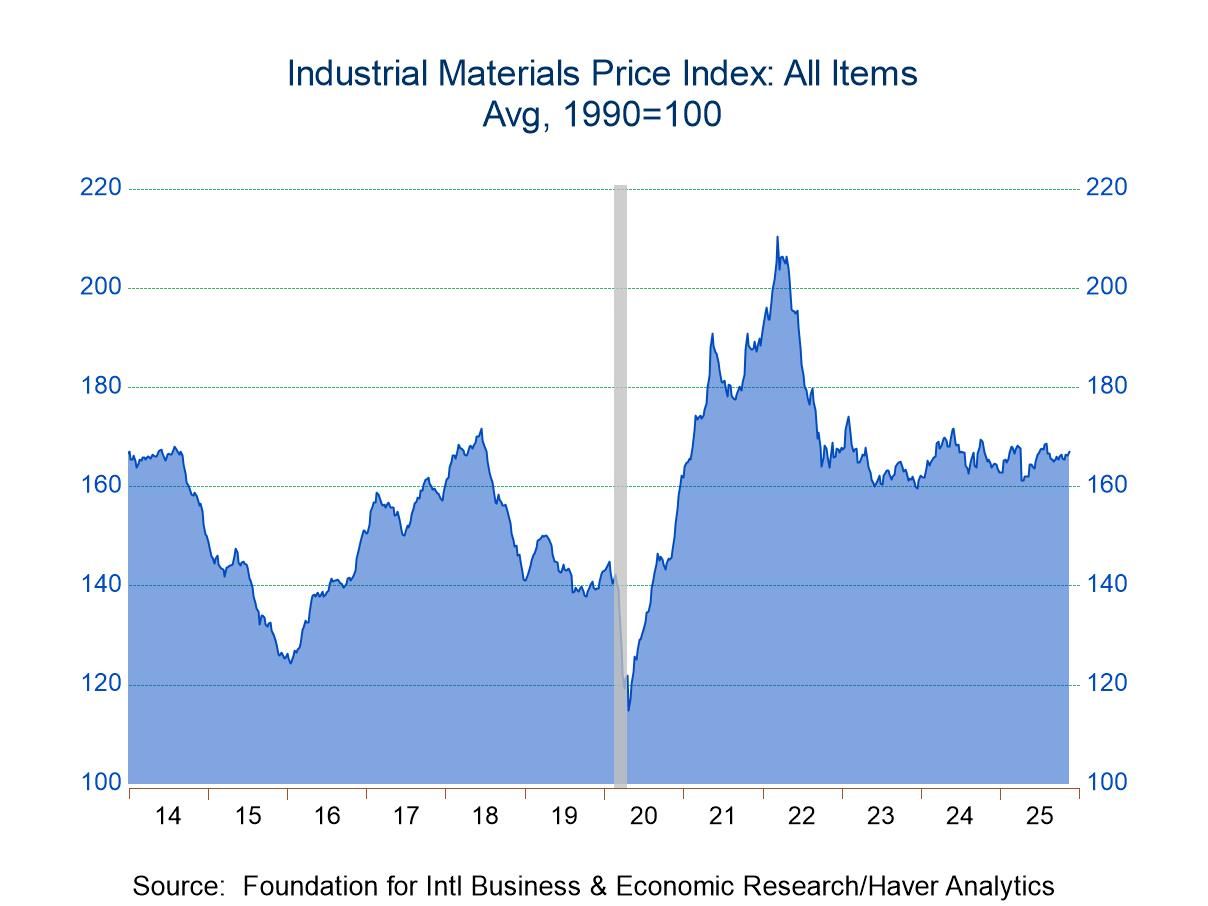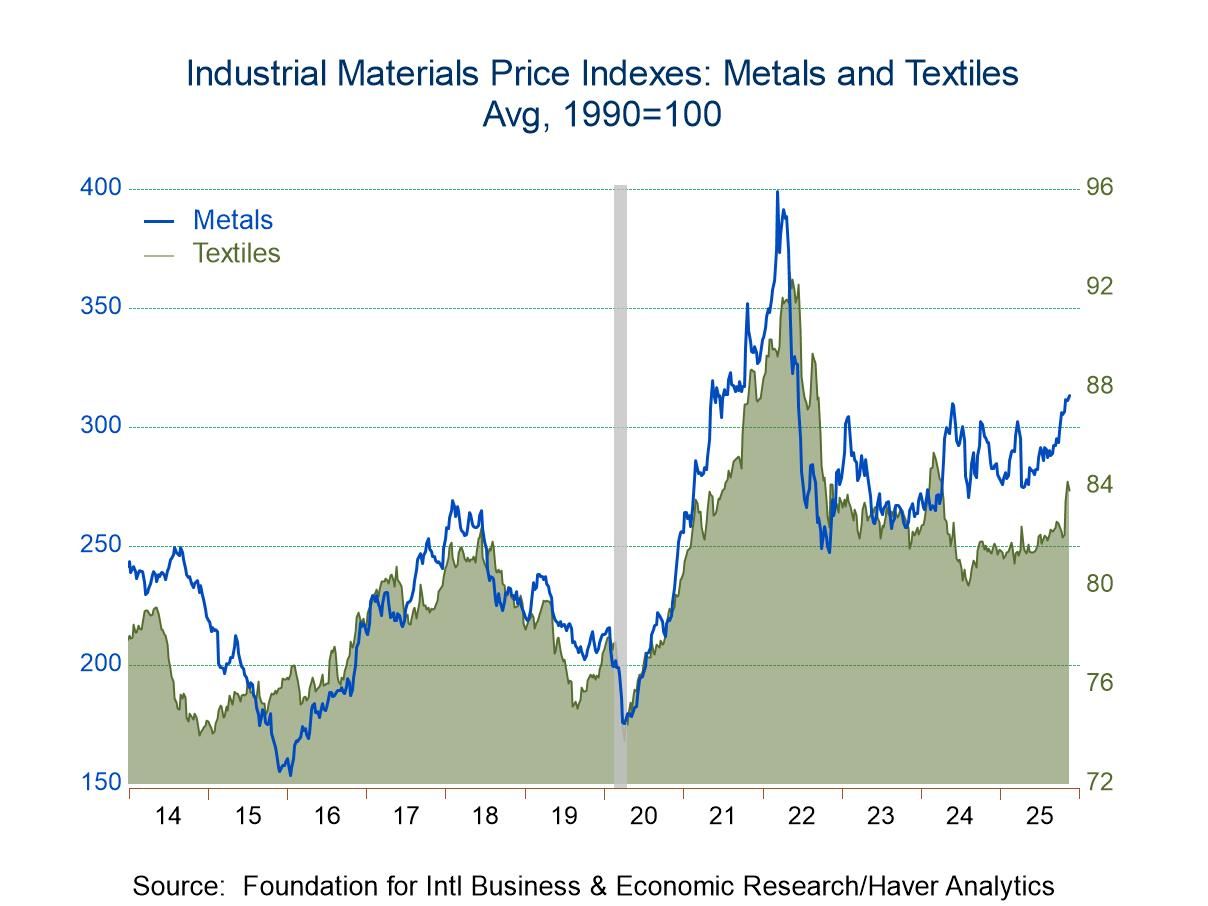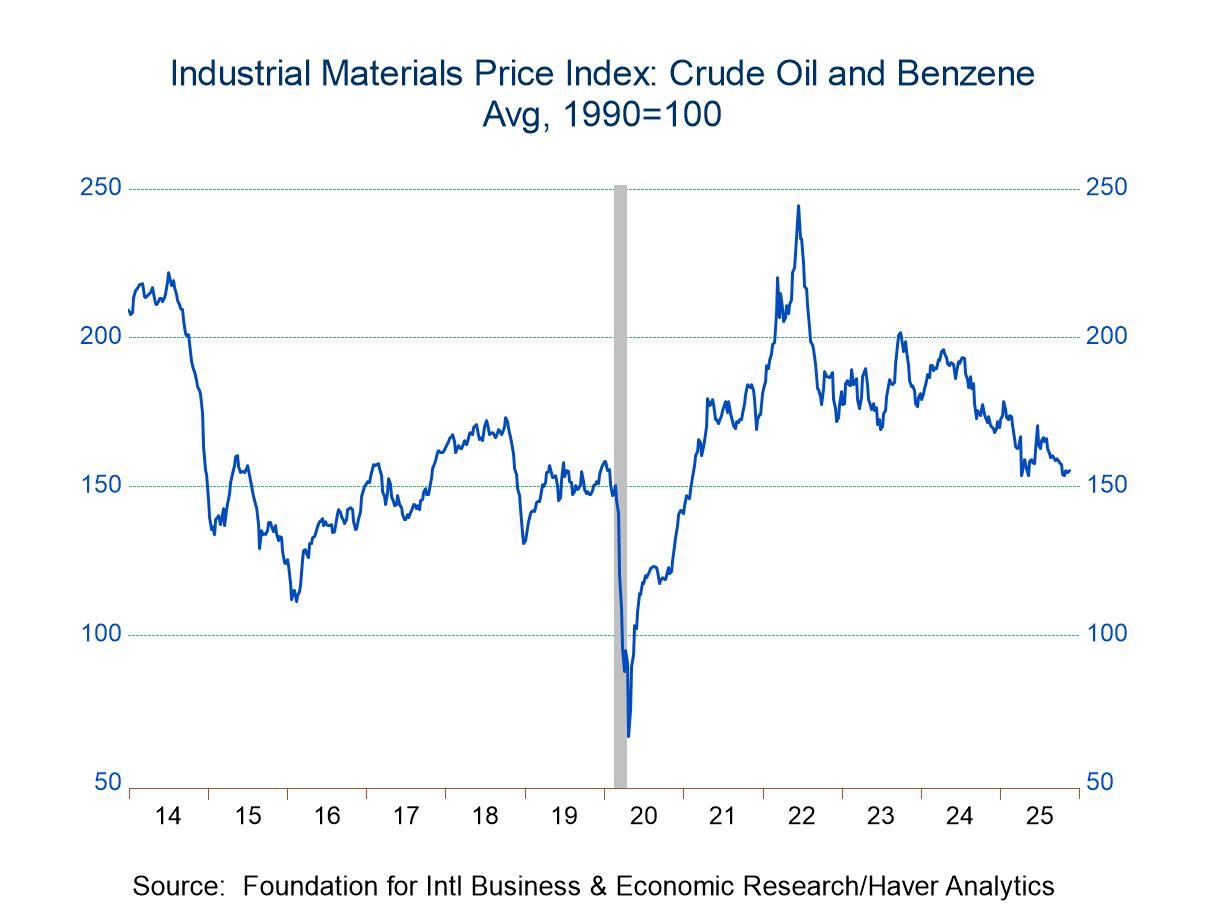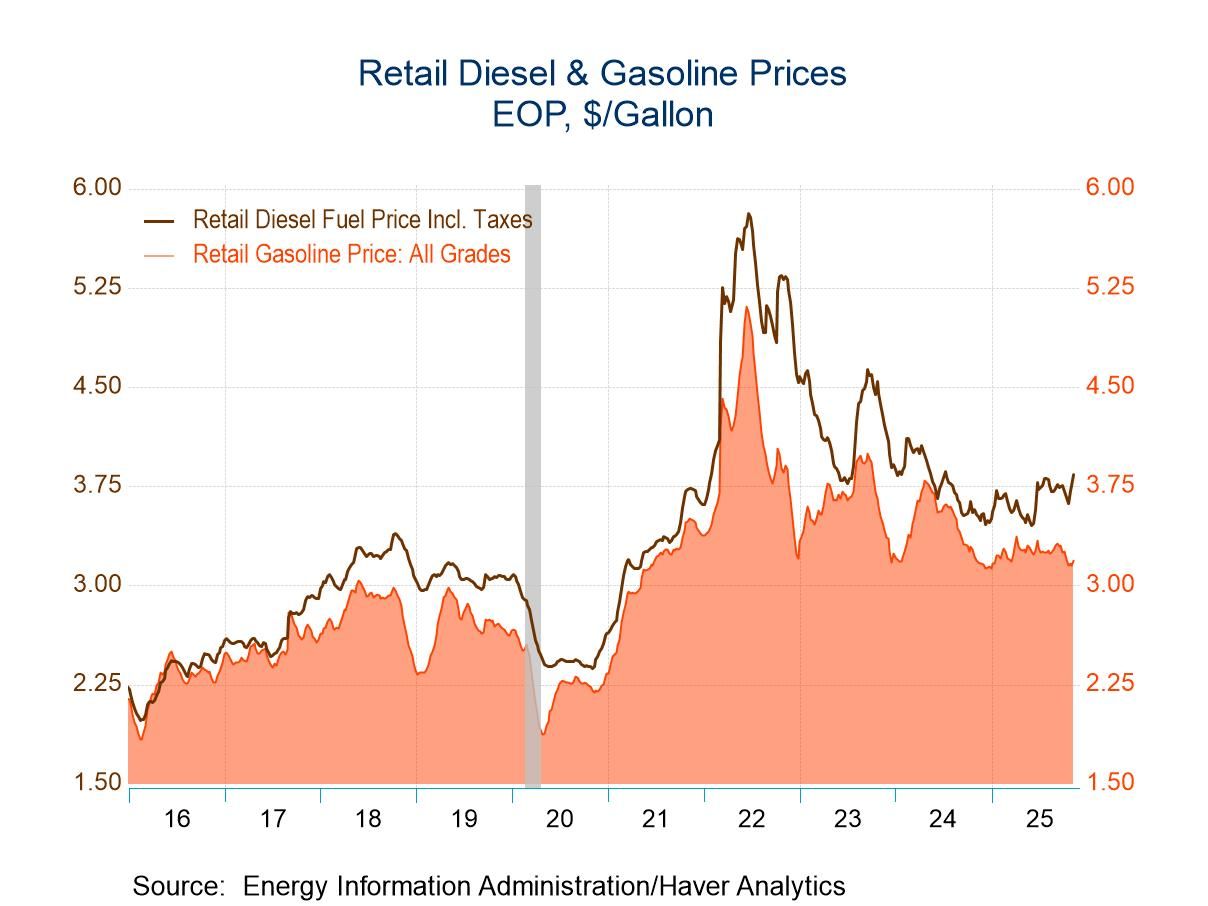FIBER: Industrial Commodity Prices Increase in Latest Four Weeks
by:Tom Moeller
|in:Economy in Brief
Summary
- Textile and metals prices continue to strengthen.
- Crude oil prices increase.
- Framing lumber costs decline again.


The Industrial Materials Price Index from the Foundation for International Business and Economic Research (FIBER) increased 0.9% during the four weeks ended November 14, 2025 after easing 0.1% in the prior four-week period. The index increased 1.5% y/y last week following a 0.5% y/y gain in the first week of the month.
Textile group prices increased 2.3% during the last four weeks, about the same as they did in the prior four weeks, and rose 3.1% y/y. The cost of burlap surged 23.4% in the last four weeks while rising a steady 48.1% over the last year. Showing a second week of modest improvement, cotton prices rose 0.4% in four weeks but declined 7.1% y/y.
Metals sector prices increased 2.7% (9.9% y/y) in the last four weeks after a 1.5% rise in the prior four weeks, as the cost of aluminum rose 3.2% (12.4% y/y). Zinc prices strengthened 3.1% (9.0% y/y) and the cost of steel scrap rose 1.2% (-3.1% y/y). Lead prices increased 4.7% (3.5% y/y) in four weeks and the cost of copper scrap rose 1.7% (19.3% y/y). Reversing earlier declines, tin prices rose 2.7% (20.5% y/y) in four weeks.
Crude oil & benzene prices improved 0.9% (-8.7% y/y) in the last four weeks, following a 1.6% decline in the previous four weeks. The cost of West Texas Intermediate crude oil rose 2.0% in four weeks to $59.63 per barrel but declined 13.3% y/y. The price was increased from a low of $58.47 in the third week of last month. The price of the petro-chemical benzene rose 0.9% (-17.8% y/y) in four weeks.
Excluding crude oil, the industrial commodity price index increased 0.8% (2.4% y/y) over the last four weeks, after holding steady during the prior four weeks.
Miscellaneous sector prices declined 2.0% in the last four weeks and fell 1.9% y/y, after falling 2.9% in the prior four weeks. Framing lumber prices fell 7.0% (-5.2% y/y). The cost of tallow, used for frying & baking, declined 6.9% (+10.5% y/y) in four weeks. Offsetting this weakness, natural rubber prices rose 3.1% in four weeks, but declined 9.3% y/y.
The Foundation for International Business and Economic Research develops economic measurement techniques as applied to business cycles and inflation in the U.S. and other market economies. The commodity price data can be found in Haver's DAILY, WEEKLY, USECON and CMDTY databases.
Why Inflation Expectations Are Important to Policymakers from the Federal Reserve Bank of St. Louis can be found here.


Tom Moeller
AuthorMore in Author Profile »Prior to joining Haver Analytics in 2000, Mr. Moeller worked as the Economist at Chancellor Capital Management from 1985 to 1999. There, he developed comprehensive economic forecasts and interpreted economic data for equity and fixed income portfolio managers. Also at Chancellor, Mr. Moeller worked as an equity analyst and was responsible for researching and rating companies in the economically sensitive automobile and housing industries for investment in Chancellor’s equity portfolio. Prior to joining Chancellor, Mr. Moeller was an Economist at Citibank from 1979 to 1984. He also analyzed pricing behavior in the metals industry for the Council on Wage and Price Stability in Washington, D.C. In 1999, Mr. Moeller received the award for most accurate forecast from the Forecasters' Club of New York. From 1990 to 1992 he was President of the New York Association for Business Economists. Mr. Moeller earned an M.B.A. in Finance from Fordham University, where he graduated in 1987. He holds a Bachelor of Arts in Economics from George Washington University.




 Global
Global

